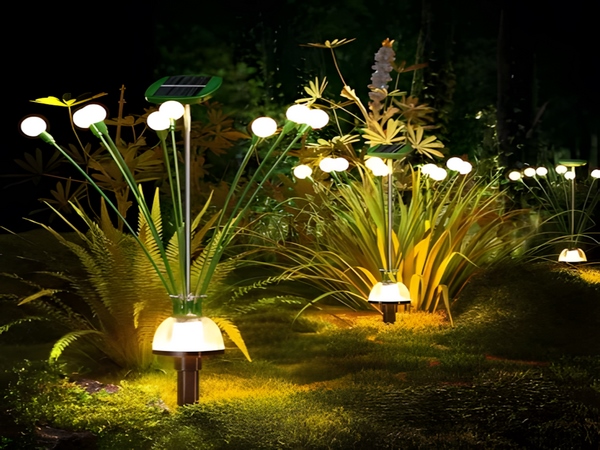
Market
Solar garden lights come with mixed LED products that create a strong sense of distrust among customers. However, solar garden lights are a sunrise product and are highly reliable solar lights. Unfortunately, some manufacturers lack professionalism, which affects the reputation of solar garden lights.
If traditional lighting fixtures are modified to create LED garden lights, even though aluminum profiles are used as heat sinks and the entire light source and driver circuit are contained within an aluminum shell, it resolves the problem of protective level. However, the entire light source is enclosed in a shell that traps the heat generated during operation, preventing it from dissipating into the air, leading to a significant increase in the operating temperature of the LED module and driver circuit in extremely harsh environments.
The increased temperature leads to light decay or even damage to the LED, while the driver may also fail due to heat, reducing the reliability and lifespan of the LED lighting product.
Heat dissipation and protection of LED lights have become industry-wide challenges. Systematic optimization in material selection and structural design is needed to resolve the conflict between heat dissipation and product protection.
The impact of heat dissipation design on the lifespan of LEDs is significant. Currently, due to the low output beam of a single LED for general lighting purposes, a large number of LED components must be placed in a single module to achieve the required illumination. Since the photoelectric conversion efficiency of LEDs is only 15% to 20%, the remainder converts to heat. Therefore, when numerous LEDs are placed together in a module, it complicates heat management.
The issue arises as this heat will increase the temperature of the LED module, and as the temperature rises, it reduces the operating voltage, decreases light intensity, and elongates the wavelength. This also affects the efficiency of the LED driver, damaging magnetic components and output capacitors, which reduces the reliability of the LED driver. This can severely shorten the lifespan of LEDs and accelerate light decay.
A good heat dissipation design for LED lighting is primarily based on the following considerations:

1) Improve the luminous efficiency of the LED by increasing the current (power) and lowering the chip junction temperature (Tj).
2) The high optical performance and reliability of LEDs depend on managing the LED chip junction temperature (Tj). Thus, effective thermal design must effectively manage Tj, with the primary methods of heat dissipation being conduction, convection, and radiation.
Among these, conduction and convection are particularly important for heat dissipation in LED garden lights; radiation is less significant. From thermal analysis, the heat (Q) relates to the dissipated power (PD) — UF × IF. Because when the efficiency of IED reaches standard values, UF and IF have relatively small changes.
Bitpott Solar Garden Lamps are professionally researched, developed, manufactured, and sold by a manufacturer that specializes in outdoor lighting, including solar and LED lights. With years of production experience and advanced manufacturing equipment, they offer quality assurance and reasonable prices and configurations.

For inquiries about the price of solar garden lights, feel free to contact our online customer service.



